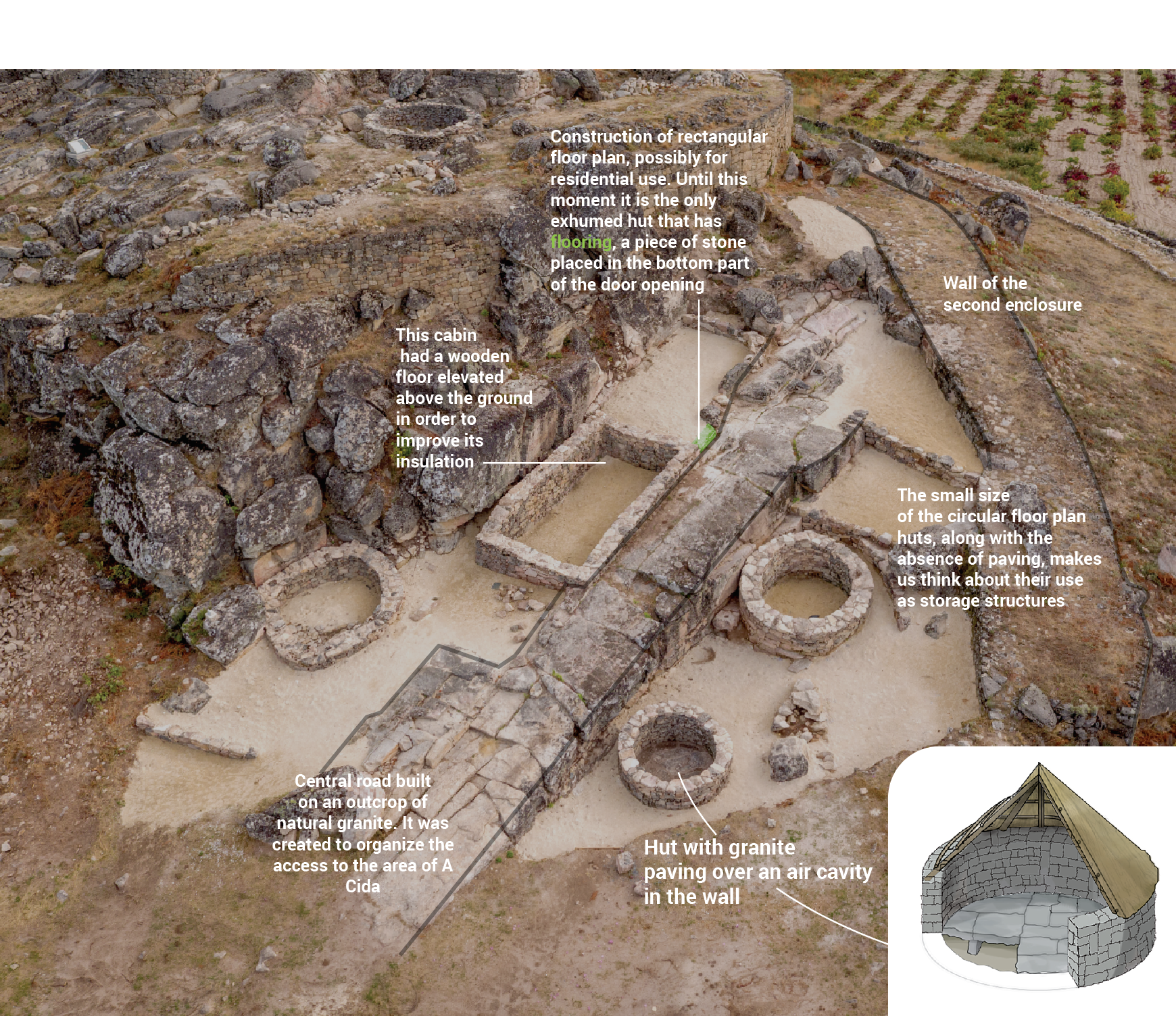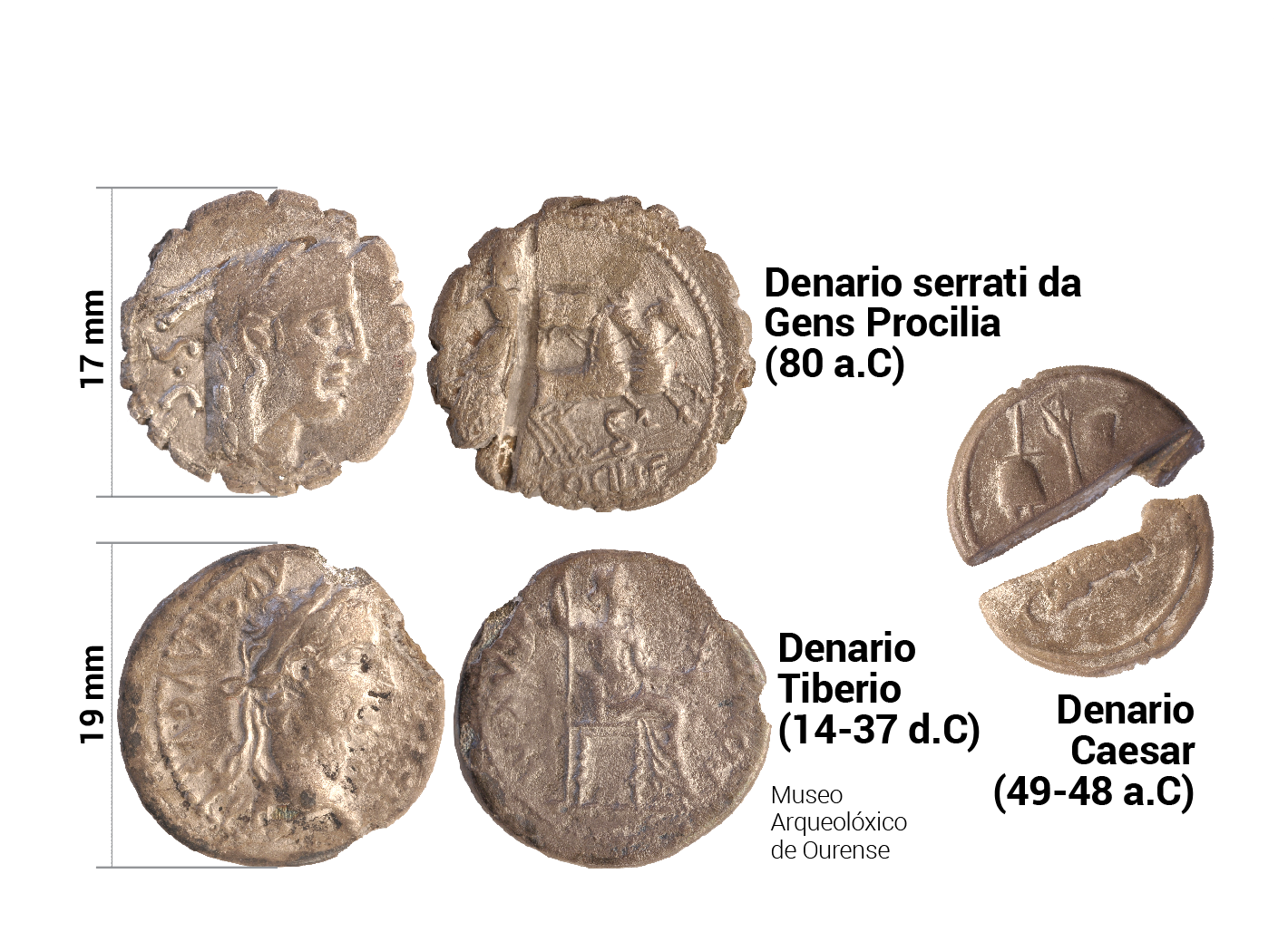The South quarter
Circa III-II BC a second period of occupation of the site would begin in which the town would be extended facing west with two fortified terraces that enabled the original space to be quadrupled. At this time the wooden buildings would give way to stone huts with a circular, square and rectangular floor plan.
These huts have different characteristics in respect to other settlements:
A. The average width of the cabins is between 3.5 and 4 m, compared to 5.5 m in other central villages. The smallness of these constructions may be explained by a system of terraced construction organization, which chose to build houses and adjective constructions at different levels of the land.
B. There are no usual patio-houses, that is, constructions for multiple uses inhabited by a family and clearly separated from each other; in any case each family would own several constructions.
Minted coins
Of the three coins discovered up to now at the settlement, all of them are silver, the two earliest ones have cut marks that were made to verify the purity of this precious metal and to avoid its falsification. In order to avoid this practice Rome even started to mint serrated Denarius coins in the outer perimeter produced by hand before being minted. It is what is known as Nummi Serrati (serrated coins). Most of the physical alterations presented by these Roman coins were made to discover their soul, meaning, to confirm their authenticity. During the Republic (509-27 BC) and at the beginning of the Empire (27 BC-284 AD) it was common practise to use a metal sheet to line the coins by soldering or heating them. The core of the coins or nummi were mainly of copper and, sometimes, of iron. It is believed that they were plated by immersing them in liquid silver.



